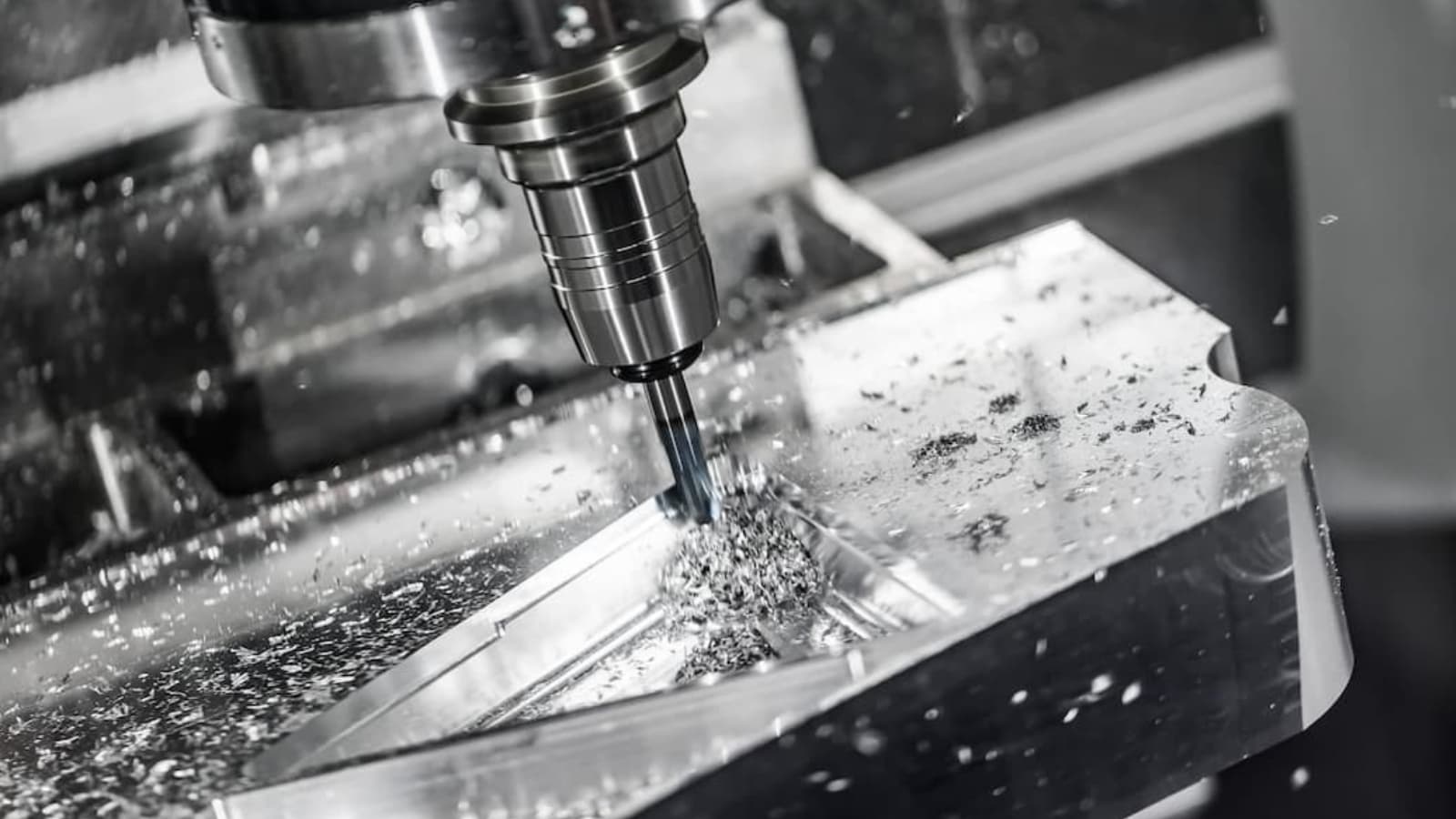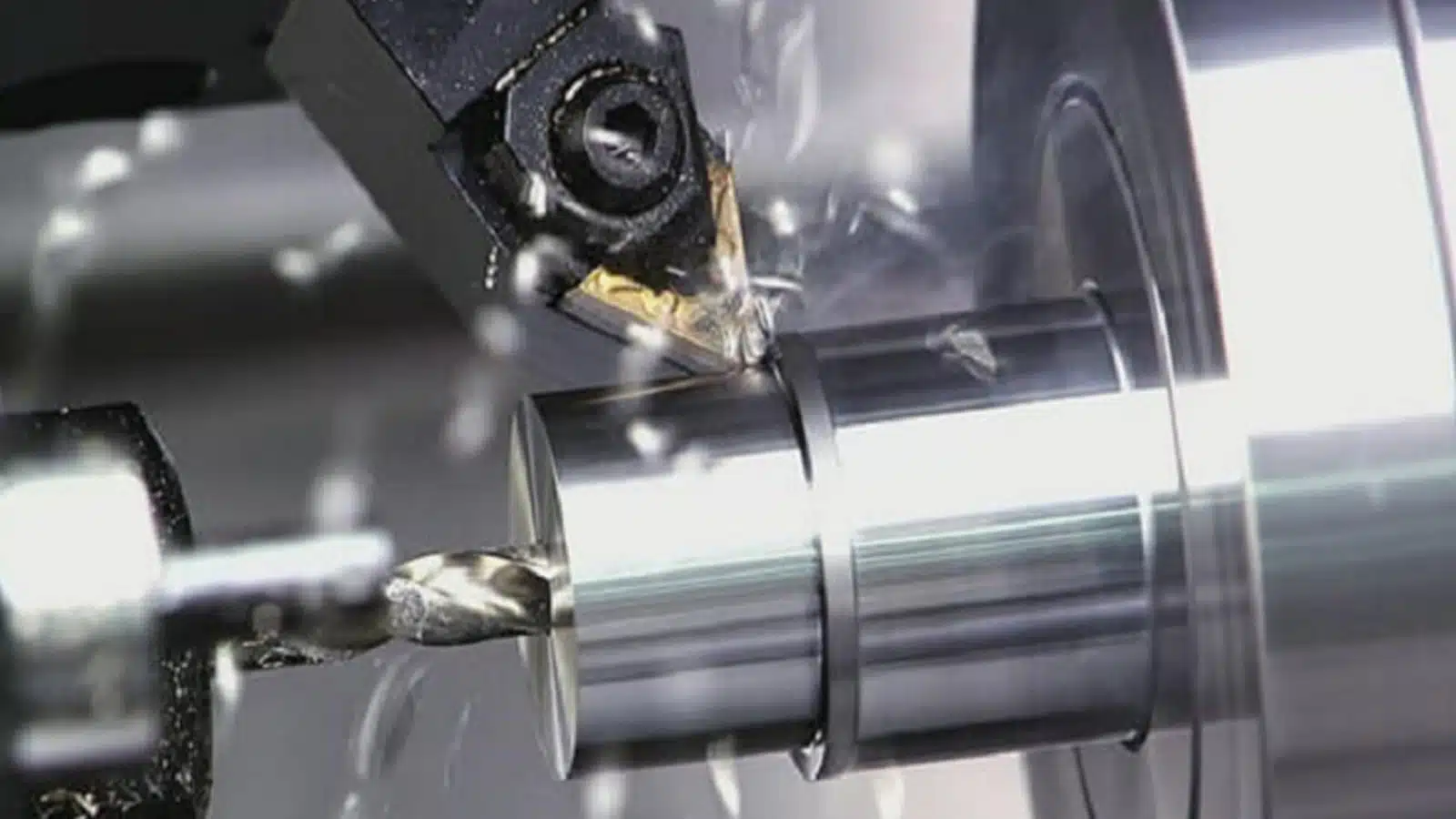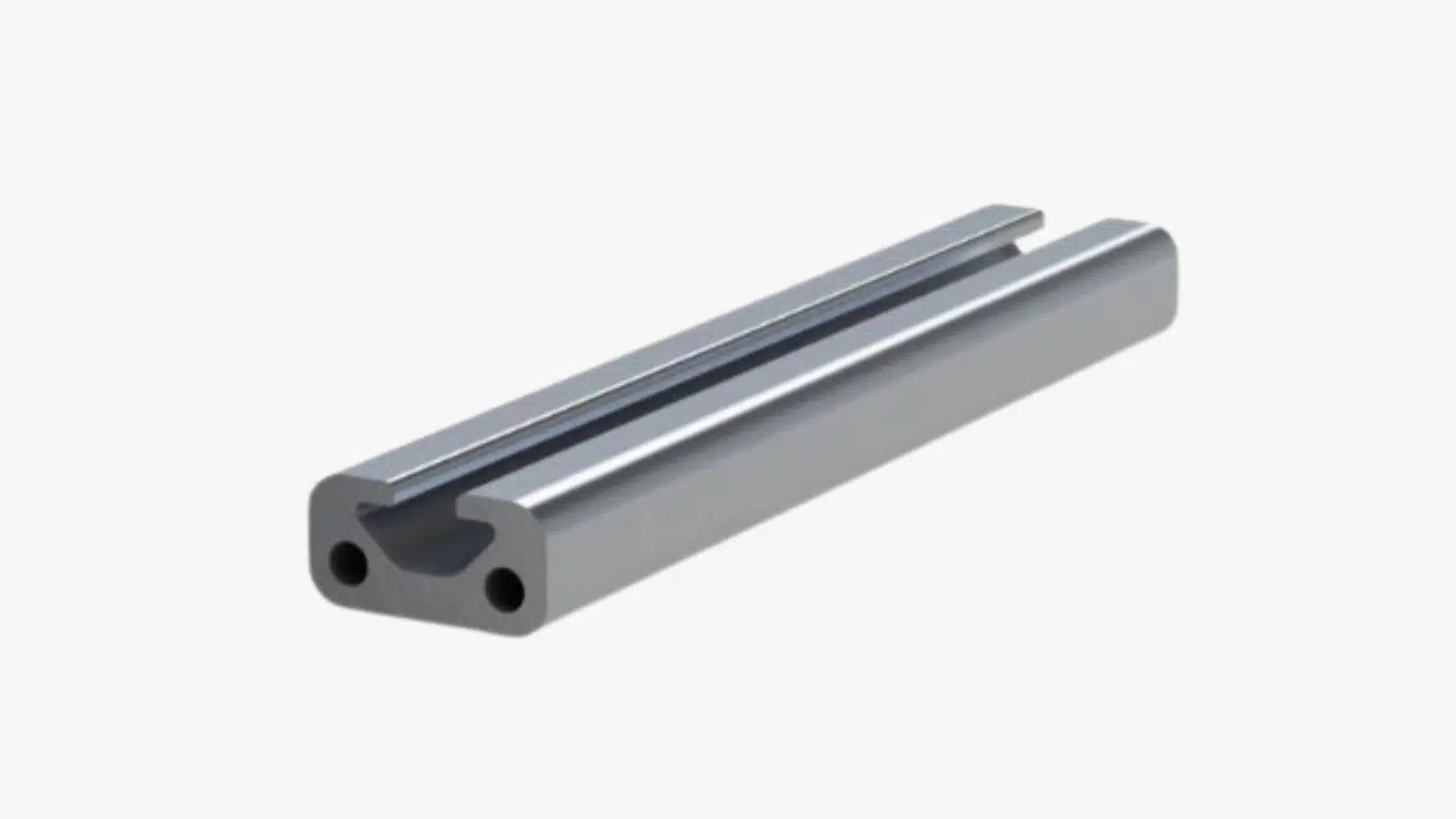The rising demand for high-performance electronics has led to the production of advanced electronics with fast microprocessors and high transistor densities. This technological modification in the components of such electronics has resulted in increased heat load during operation. Therefore, a thermal management system that features the right heat sink design is ideal to ensure the electronics’ optimal performance.
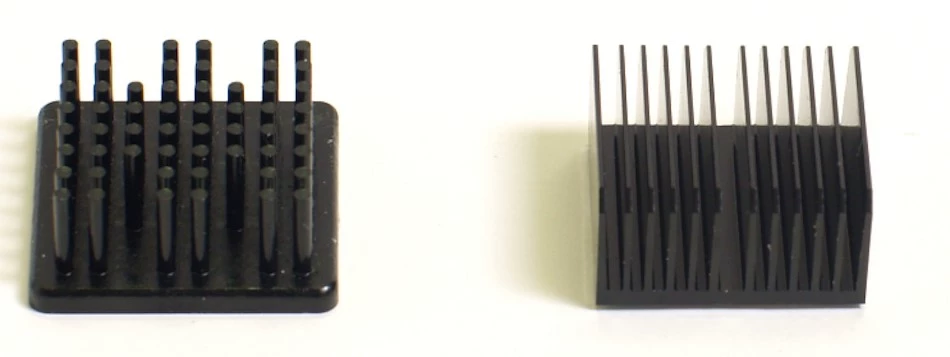
To prevent system failure of the electronics and guarantee efficient heat dissipation, heat sinks are ideal for providing cooling effects in electronics. Therefore, in this article, we will answer the question: how does a heat sink work? We would also explore the importance of a heat sink, the basics of a heat sink design, and how to optimize a heat sink design for optimal electronics performance. Let’s dive right in.
Heat Sink Design Basics
A heat sink is a mechanical component used in electronic devices to prevent overheating electrical components by providing supplementary cooling. It dissipates heat from an electrical component, usually a power transistor, to the surrounding environment. This environment is most commonly a lower-temperature fluid medium like air or a liquid coolant.
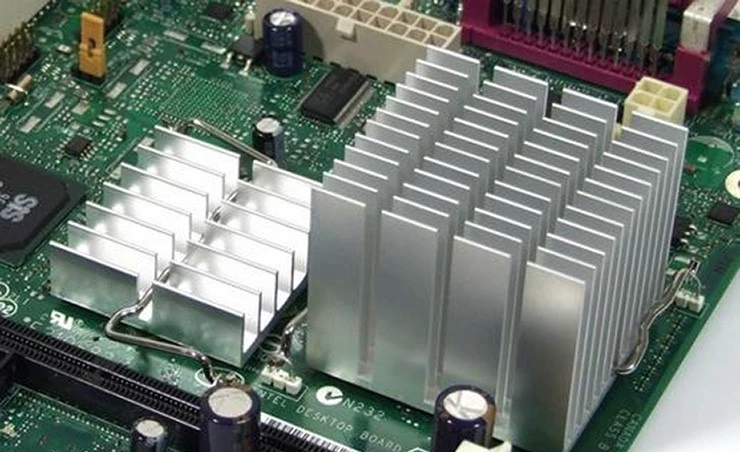
Heat sinks are usually in transistors or processors. Manufacturers fit them with a built-in fan to dissipate energy from the electronics. However, not all heat sinks have a connection to a fan. Those with a fan attachment are “Active Heat Sinks”, and those without a heat sink are known as “Passive Heat Sinks.”
Importance of Using Heat Sinks
A heat sink is important in most electronic products due to its ability to prevent overheating electrical components. Therefore, the device will be able to work at the specified temperature. Below are other reasons why heat sinks are important.
- Maintenance of Thermal Energy
A heat sink maintains the electronic device’s controlled thermal energy by transferring heat from the electronic circuit elements to the surroundings.
- Improves Electronic Reliability
A heat sink improves the reliability of electronic devices due to it preventing component failure by its function.
- It Also Provides Heat
Heat sinks provide heat in cases of a drop in temperature within the electrical circuit.
Based on such importance, heat sinks are now essential components of many electronic devices. For example, they are part of the central processing unit of computers.
Applications
Heat sinks have a wide range of applications, especially in electronic devices. The reason is that these devices generate a large amount of heat during operation, and they cannot moderate their temperature. This generated heat can impact the performance of semiconductors within the electronic device. Therefore, results in the failure of components and ultimately damage to the device.
Analyzing the thermal performance of every electronic device is tasking. Hence heat sink design is to provide supplementary cooling to these devices by dissipating heat to the surroundings from electrical components such as diodes, voltage regulators, transistors, and integrated circuits.
Factors and Tips in Heat Sink Design
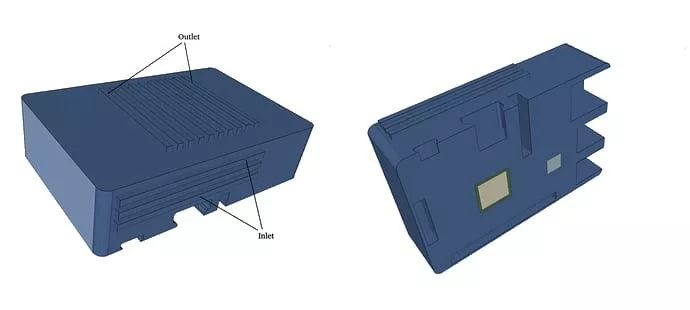
The effective dissipation of thermal energy by a heat sink is largely dependent on its design. As a passive heat exchanger, a heat sink design should allow easy heat transfer to its environment. This process of heat transfer is usually by conduction, convection, or radiation. Sometimes, it is a combination of these three heat transfer methods. For efficient heat sink construction, there are many factors to consider. Below is an explanation of the cogent factors you should include before learning how to create a heat sink.
Thermal Resistance
Thermal resistance refers to the resistance to the flow of heat between the semiconductor and the surroundings. The environment can be ambient air or a coolant fluid.
Determining the thermal resistance of a device is important in the selection of heat sinks. This is because the path for heat dissipation must have a considerable amount of thermal resistance. This, in turn, will determine how quickly the transfer of heat takes place. Thermal resistance ensures the efficiency of a heat sink as it shows whether there is a reduction in temperature.
Materials Used in Heat Design
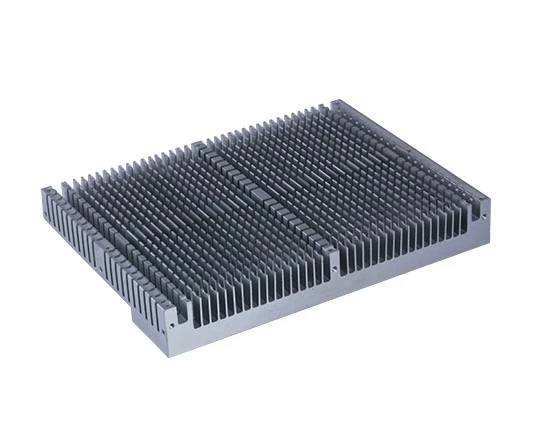
· Heat Sink Material
Most heat sinks come from Aluminium and Copper alloys because they are highly conductive. Aluminum is less expensive, and it is ideal based on its ductility which makes it easy to design it for making heat sinks. There are other materials. For example, copper, due to its high thermal conductivity and corrosion resistance, is usually part of the heat sink design. However, aluminum is the most dominant material. This combination has proven to be more effective and can be employed in your module for heat sink construction.
· Interface Materials
Thermal interface materials are the material that makes up the space between the heat sink. It is normally air. However, some manufacturers use other materials such as mica. Thermal interface materials lower the thermal resistance of an electronic device and ensure its fast transfer of thermal energy.
The heat generated by the device is a summation of its component heat generation. Since the component has varying thermal resistance, it isn’t easy to guarantee effective dissipation of heat. To guarantee effective heat flow from the electronic device, minimize thermal resistance. This is possible by incorporating a thermal interface material.
Shape and Arrangement of Fins
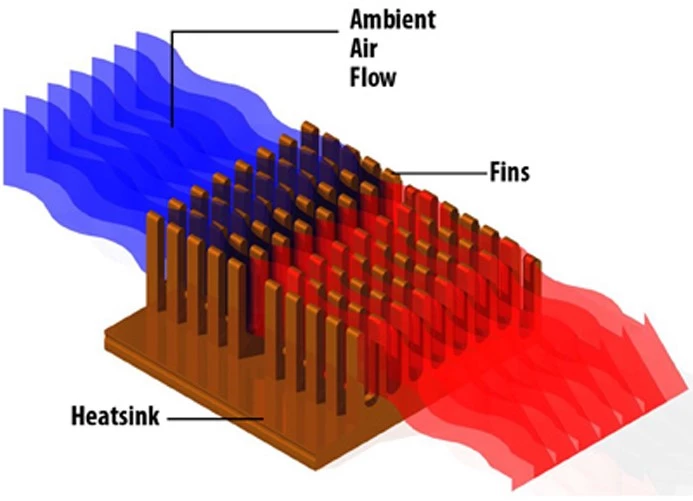
The efficient dissipation of heat from the device to a coolant medium also depends on fin arrangements. Heat sink design normally features fins soldered during heat sink construction. These fin’s orientation is to provide a surface area that allows air to pass through the heat sink. Therefore, they are critical in the cooling process.
Therefore, heat sink fin efficiency depends on the shape of the fins and you must consider it to ensure effective convection of heat from the electronic device and, in turn, guarantee the cooling of the device and the heat sink.
Heat Sink Attachment Methods
The effectiveness of heat sinks will improve by choosing an appropriate attachment method. This selection process must consider the device’s thermal and mechanical requirements before deciding which attachment method is most suitable.
There are many methods of attaching a heat sink to an electronic device. Common methods are:
– Thermal Tapes.
– Wire Clips
– Plastic Clips.
– Push Pins.
– Spring Loaded Screws.
Heat Sink Design Thermal Resistance Calculator
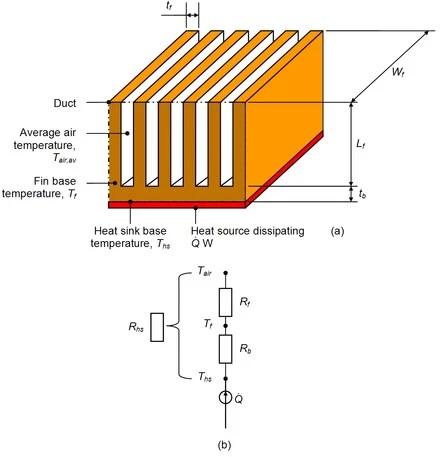
Designing a heat sink also comes with understanding some calculations related to thermal resistance. The equation below is used to calculate the Thermal Heat Resistance (Rhs)
Rhs = (Tj-Tmb/P) – (Rth-jc) – Rinterface
Tj: Maximum junction temperature of the device in 0C.
Rth-jc: Junction to case thermal resistance
Tamb: Ambient air temperature at 0C.
P: Heat dissipated from the heat source
Rinterface: Thermal interface material resistance
Rinterface = (tint/Ls x Ws x kinterface)
tinterface: Thermal interface material thickness
kinterface: Thermal conductivity of interface material
Ls: Length of heat source
Ws: Width of heat source
Knowing the calculation comes with understanding the above. Therefore, it will be easy to incorporate such parameters in the heat sink design to get a thermal heat resistance greater than the highest operating temperature of a semiconductor. Also, from the equation, you can calculate the heat sink’s optimal dimension such that you will have the lowest heat source temperature.
Conclusion
Heat sinks are of high importance and the design of heat sinks is carefully structured to guarantee effective performance. Therefore, many things must be taken into consideration. This article talks about such factors that can help in heat sink design. It also answers questions such as how a heat sink works and tips to include in your design guide.
With this knowledge, you can optimize your heat sink design for better performance. Do you want the best heat sink design at a low price? Then you should utilize our services. Consult with our support team for manufacturing advice. If you already have a CAD file, upload it now to get an instant quote for your design.
FAQ
The use of a heat sink must not be determined at random. Every project is unique, and as such, the amount of heat sinks to be used would depend largely on your project’s size. Also, consider the heat sink design factors listed above
Asides from the use of copper-aluminium alloys in the production of heat sinks, there has been a breakthrough in the use of aluminium combined with carbon-derived materials. These carbon-derived materials possess higher thermal conductivity than copper, and its fusion to aluminium, which is ductile, makes it a perfect alternative. Natural graphite composite materials have also been used. However, the conventional aluminium and copper heat sinks have proven to perform better than the alternatives.
